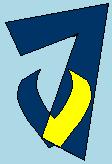A quick look at buoyancy
It is usual to make vehicles that are positively bouyant. This buoyancy is usually 2.3 kg for small vehicles and 22.7 kg for larger vehicles. Positive buoyancy reduces power, and the need to thrust up, disturbing the sediment below.
The moment equation assesses the stability of vehicles:
m = (W)BGsintheta
m = moment w = weight of vehicle BG= distance bewteen the centre of buoyancy an d the centre of gravity theta = pitch angle or roll angle
A high bg, weight low, and buoyancey high poroduces a stable vehicle. Heavy components such as motors tend to be at the bottom, while the syntactic foam and light chambers are at the top of the rov. Syntactic foam is described as a fixed ballst. AUVs can use the design of their pressure hulls as a means of providing buoyancy. For a drilling ROV it will have to have variable buoyancy, the ability to move right down to the ocean floor and back up. This can be achieved by using air compresors, or flooding tanks similar to those found in submarines.
Navigaton
Here is some stuff I found on navigation for a top of the line AUV developed in 2000, called Martin. I got this from the website www.diveweb.com
A key feature to achieving this autonomy is Martin's unique high-precision
positioning system, Marpos, developed jointly by Maridan and the
Kearfott Navigation and Guidance Corporation of New Jersey. The system
centers on Kearfott's KN5053 monolithic ring-laser gyro coupled with
their accelerometers and integrated with an RDI Doppler velocity log.
Additional inputs handled by the system come from a Digiquartz pressure
sensor, an altitude sensor, CTD sensor and clock and, on the surface before
and after each survey, a DGPS receiver. Input from these sensors is
processed by sophisticated software developed by Maridan that ensures the
extraordinary precision of the system
Hybrid Navigation System
This is probably our best method of navigation. We are going to be laying sensor buoys at some stage, so it makes sense to use these, and maps to triangulate position. We will also use a transponder independent system , when the auv is exploring regions out of range with the beacons, or completely undiscovered. This is a long-base line navigation method. In long base line navigation, acoustic beacons(transponders) are laid on the surface. Four transducers is an optimum numbers at the four corners of the entire region. The underwater vehicles are equipped with acoustic transceivers. to interact with the acoustic beacons.
Inside the pressure hull of the auv we will use the inertial navigation unit consisting of ring laser gyro, coupled with velocity logs from our adcp. It also consists of a filter to collect all the data fom the pressure sensor, altitude sensor and ctd.

